Three years ago, my neighbor Sarah was making spreadsheets at her kitchen table, trying to figure out if she could actually make her consulting business work. Last week, she hired her third employee. Sarah’s story isn’t unique – according to the U.S. Census Bureau’s latest business data, she’s part of a massive wave of 29.8 million nonemployer businesses that are outpacing traditional employer businesses in growth and driving significant economic activity.
These statistics reflect a broader transformation happening across all business sectors, where traditional models are being challenged and innovative approaches are creating entirely new opportunities for growth and disruption. The business landscape changes faster than ever, but understanding which developments have genuine staying power versus which are temporary disruptions requires a simple way to figure out what’s worth your time.
Why These Business Stories Matter Right Now
Business stories aren’t just news – they’re the info you really need to know that can make or break your competitive positioning. The most successful companies don’t just react to industry changes; they identify emerging narratives early and position themselves within those stories.
Look, not every development deserves your attention. Some stories capture headlines for weeks before fading into irrelevance, while others quietly reshape entire industries. The difference lies in understanding what makes a business story truly significant.
Understanding how to craft compelling narratives that resonate with your audience is essential, which is why learning how to write a story using proven psychological principles can transform your business communication.

You need stories that connect with real business challenges your audience faces. When Microsoft reports $3.2 billion in additional revenue from AI integration, my first thought wasn’t about the technology – it was about my friend Jake who runs a small marketing agency. He’s been avoiding AI because it feels overwhelming, but those numbers suggest he might be leaving serious money on the table. When companies consistently report 40% productivity gains from four-day work weeks, that’s not just an HR trend – it’s a fundamental challenge to how we think about work itself.
The most valuable business stories combine immediate relevance with long-term implications. They feature credible sources, measurable impacts, and clear stakes for different stakeholders. Most importantly, they offer insights you can actually use to make better business decisions.
Fox Business and other major outlets cover thousands of business developments each week, but only a fraction deserve strategic attention. The key is developing filters that help you identify which business news will actually impact your bottom line versus which stories are simply filling content quotas.
How to Evaluate Business Stories That Actually Impact Your Bottom Line
Here’s what I look for when a business story crosses my desk:
-
Does this actually affect real companies right now?
-
Can I trust where this information came from?
-
Will my audience care about this next week?
-
Can I explain this to my mom and have her understand why it matters?
This approach helps distinguish between temporary news cycles and fundamental business transformations that deserve strategic attention and resource allocation.
Relevance and Timeliness: Does This Story Matter Now?
Current market impact should be your first filter. Ask yourself: How does this development affect today’s business environment? Stories about AI adoption in enterprise software score high because they’re actively changing how companies operate right now. Stories about quantum computing might score lower on immediate relevance but higher on future implications.
Future implications matter just as much as current impact. The best business stories help you anticipate what’s coming next. When you see patterns across multiple companies or industries, that’s usually a signal worth paying attention to.
Audience interest provides the final relevance check. Your stakeholders care about stories that connect to their daily challenges and opportunities. A story about supply chain transparency resonates because every business leader has dealt with supply chain disruptions.
Credibility and Sources: Can You Trust This Information?
Source quality determines whether a story deserves serious consideration. Reports from established business publications carry more weight than unverified claims on social media. Company earnings reports and official announcements provide the most reliable foundation for business stories.
Fox Business, Business Insider, and major financial outlets maintain editorial standards that help filter out unreliable information. When Business Insider reports on workplace trends or Fox Business covers market developments, they typically verify claims through multiple sources and provide context that helps readers understand broader implications.
I talked to a procurement manager last month who said her company wasted $50,000 on carbon credits that turned out to be questionable at best. Now they spend way more time vetting sources, but they’re getting real environmental impact and avoiding the PR nightmare of being called out for greenwashing.
Expert commentary adds crucial context to business developments. Industry analysts, academic researchers, and experienced practitioners can help you understand whether a story represents genuine innovation or clever positioning.
|
Evaluation Criteria |
High Impact Indicators |
Low Impact Indicators |
|---|---|---|
|
Market Relevance |
Affects multiple industries, measurable financial impact, addresses current business challenges |
Limited to single company, speculative benefits, no clear business application |
|
Source Credibility |
Established publications, verified data, multiple independent sources |
Single source, unverified claims, promotional content |
|
Timeline Impact |
Immediate operational changes, 12-24 month ROI, proven case studies |
Theoretical benefits, 5+ year timeline, no implementation examples |
|
Stakeholder Interest |
Directly affects audience daily work, clear competitive implications |
Tangential relevance, unclear business value |
Narrative Strength: Does This Story Connect With People?
The human element makes business stories memorable and actionable. Stories about workplace evolution resonate because everyone can relate to changing work dynamics. Stories about AI collaboration work because they address real fears and opportunities that employees face.
The power of personal connection in storytelling becomes clear when you examine powerful anecdote examples that demonstrate how individual experiences can illustrate broader business trends.
Conflict and resolution create compelling narratives that hold attention. The tension between return-to-office mandates and employee preferences creates natural drama. The competition between tech giants for AI dominance provides clear stakes and protagonists.
Uniqueness helps stories break through information overload. What makes this development different from typical business news? Why should busy executives pay attention to this particular story instead of the dozens of others competing for their time?
Business Impact: What Are the Real Stakes?
Financial significance provides concrete evidence of a story’s importance. When Apple commits $430 billion to U.S. manufacturing, that’s not just a policy statement – it’s a massive resource allocation that will reshape entire supply chains.
Industry disruption indicates stories with lasting impact. Changes that force established companies to modify their business models usually signal fundamental shifts rather than temporary adjustments. Fox Business regularly covers these disruptions because they create winners and losers across entire sectors.
Stakeholder effects help you understand who wins, loses, or gets transformed by business developments. The best stories clearly identify how different groups – investors, employees, customers, partners – will be affected by changes.
Storytelling Potential: Can You Make This Compelling?
Narrative arc determines whether a business story can sustain audience attention. Stories need clear beginnings, compelling middles, and satisfying conclusions. The evolution of blockchain from cryptocurrency speculation to practical business applications provides this kind of complete narrative structure.
Visual elements enhance story impact and comprehension. Stories that can be supported with data visualizations, infographics, or compelling imagery tend to generate more engagement and understanding.
Shareability indicates stories that will generate ongoing discussion and amplification. Will your audience want to discuss and share this story with their networks? Stories that spark conversation tend to have longer-lasting impact than those that don’t.
Technology & Innovation: The Stories Reshaping Every Industry
Technology stories dominate business headlines because they represent fundamental shifts in how companies operate, compete, and create value. These five stories showcase technologies moving from experimental phases to practical business applications with measurable returns on investment. From AI generating billions in new revenue to quantum computers solving real manufacturing problems, these developments are creating competitive advantages for early adopters while forcing entire industries to reconsider their operational models.

Fox Business and other major outlets cover technology developments extensively because they affect every sector of the economy. The challenge isn’t finding technology stories – it’s identifying which ones will actually transform your business operations versus which ones are simply generating headlines.
1. The AI Arms Race in Enterprise Software
The competition between Microsoft, Google, and emerging AI startups isn’t just about better software – it’s about controlling the future of work itself. Microsoft’s early partnership with OpenAI has paid off spectacularly, with their AI-powered Office tools generating $3.2 billion in additional revenue within the first year of deployment.
Google responded aggressively with Workspace AI features that increased user engagement by 40%, but they’re playing catch-up in a market where first-mover advantages compound quickly. Meanwhile, startups are securing enterprise contracts worth hundreds of millions, proving that established tech giants don’t automatically win in AI markets.
Think about your last team meeting. How much time did you spend on tasks that felt repetitive or mind-numbing? That’s exactly what AI is starting to handle. A mid-sized consulting firm implemented Microsoft’s AI-powered Office tools six months ago. Their proposal writing time decreased by 60%, client research became 3x faster, and junior analysts could produce senior-level insights with AI assistance. The $50,000 annual software investment generated $300,000 in additional billable hours within the first quarter.
This story matters because it shows how AI is moving from experimental technology to essential business infrastructure. Companies that integrate AI tools effectively are seeing measurable productivity gains, while those that delay adoption risk falling behind competitors who can work faster and more efficiently.
2. The Quantum Computing Breakthrough
IBM’s quantum computing achievement represents a genuine breakthrough in commercial applications. Their quantum system solved a complex supply chain optimization problem for a major manufacturer in minutes – a calculation that would have required days using traditional computers. The result? $50 million in annual savings from improved logistics efficiency.
This isn’t just a technical milestone; it’s proof that quantum computing can deliver immediate business value for specific types of problems. Supply chain optimization, financial modeling, and drug discovery represent the first wave of practical quantum applications.
However, quantum computing remains highly specialized. Most businesses won’t need quantum computers for everyday operations, but companies dealing with complex optimization problems should start exploring partnerships with quantum computing providers.
3. The Rise of Digital Twins in Manufacturing
General Electric’s digital twin implementation shows how virtual modeling can transform physical operations. By creating detailed digital replicas of their jet engines, GE can predict maintenance needs, optimize performance, and prevent failures before they occur. The results speak for themselves: 30% reduction in maintenance costs and 15% improvement in fuel efficiency.
Digital twins work by continuously collecting data from sensors embedded in physical systems, then using that data to update virtual models that can simulate different scenarios and predict outcomes. This approach transforms maintenance from reactive repairs to proactive optimization.
Manufacturing companies across industries are adopting digital twin technology for everything from production lines to entire facilities. The technology requires significant upfront investment in sensors and modeling software, but companies typically see returns within 18-24 months through reduced downtime and improved efficiency.
4. Blockchain Beyond Cryptocurrency
Walmart’s blockchain implementation demonstrates how distributed ledger technology can solve real business problems. Their food traceability system now covers over 100 suppliers and can identify contamination sources in seconds rather than the days or weeks required by traditional tracking methods. During food safety incidents, this speed can literally save lives while protecting brand reputation.
Maersk’s blockchain-based shipping platform has reduced paperwork processing time from weeks to hours while providing unprecedented transparency in global supply chains. De Beers uses blockchain to authenticate diamonds and prevent conflict minerals from entering legitimate markets.
These applications share common characteristics: they involve multiple parties who need to share information but don’t necessarily trust each other, they require permanent records that can’t be altered, and they benefit from automated execution of agreements when specific conditions are met.
Companies implementing blockchain for practical applications report ROI within 18 months, primarily through reduced administrative costs and improved process efficiency. The technology is finally moving beyond cryptocurrency speculation to become a useful business tool.
5. The Metaverse Pivot to Business Applications
The metaverse pivot is probably the fastest I’ve ever seen Silicon Valley go from “This will change everything!” to “Actually, let’s just use VR for training videos.” Sometimes the most practical applications are the ones that work.
After the consumer metaverse hype cooled, companies discovered that virtual and augmented reality technologies work better for specific business applications than general entertainment. Accenture’s VR training program demonstrates this shift perfectly – they’ve trained 50,000 employees in virtual environments, reducing training costs by 40% while improving knowledge retention by 25%.
VR training works particularly well for dangerous or expensive scenarios that would be impractical to recreate in real life. Employees can practice emergency procedures, learn complex equipment operation, or develop customer service skills in risk-free virtual environments.
The key lesson: immersive technologies work best when they solve specific business problems rather than trying to create entirely new digital worlds.
Sustainability & ESG: From Compliance to Competitive Advantage
Sustainability and ESG initiatives are transforming from regulatory compliance requirements into strategic business advantages that drive revenue growth and competitive differentiation. These four stories demonstrate how companies are turning environmental and social challenges into profitable business opportunities while meeting increasing investor and consumer demands for responsible business practices.
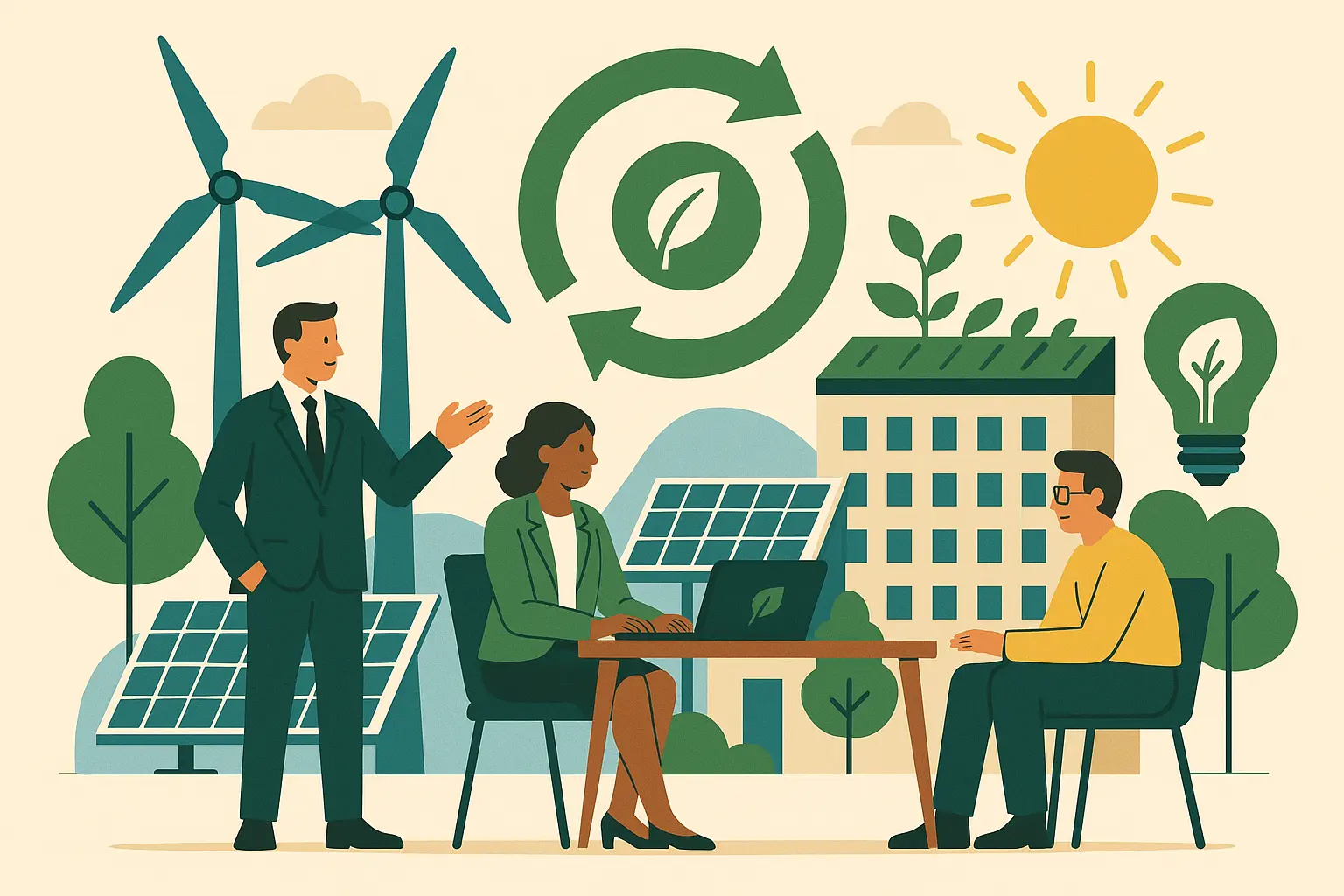
Fox Business regularly covers ESG developments because they affect investment flows, regulatory requirements, and consumer preferences across all industries. The business case for sustainability has moved beyond compliance to become a driver of innovation and competitive advantage.
6. The Carbon Credit Market Transformation
Here’s the thing about Microsoft’s $1 billion climate fund – it’s not charity. They figured out that buying carbon credits isn’t just about looking good; it’s about building better relationships with suppliers and showing customers they’re serious about the environment. And honestly? It’s working. Their partners trust them more, and customers are choosing them over competitors partly because of this stuff.
The voluntary carbon credit market has exploded from $300 million in 2018 to over $2 billion in 2024, with companies leading corporate purchasing. That’s not just tree-hugger money – that’s serious business investment. But here’s where it gets tricky: some of these credits are basically worthless. You’ve got companies selling “offsets” that don’t actually offset anything meaningful.
I talked to a procurement manager last month who said her company wasted $50,000 on carbon credits that turned out to be questionable at best. Now they spend way more time vetting credits, but they’re getting real environmental impact and avoiding the PR nightmare of being called out for greenwashing.
The lesson? Don’t just buy the cheapest credits you can find. Do your homework, or you might end up looking worse than if you’d done nothing at all.
7. The Circular Economy Success Stories
Patagonia’s “Worn Wear” program is brilliant in its simplicity. They sell used Patagonia clothes and make $100 million a year doing it. Think about that – they’re making money selling stuff they already sold once. Their customers love it because they can afford better gear, and Patagonia loves it because they’re spending less on new materials.
I know a small furniture company that copied this idea. They started taking trade-ins on old furniture, fixing it up, and reselling it. Sounds simple, right? It took them 18 months to figure out the logistics, but now they’re making an extra $2 million a year and their customers think they’re environmental heroes. The program reduced raw material costs by 25%, created a new revenue stream, and attracted environmentally conscious customers who paid 15% premium prices for “circular” products.
The key insight here isn’t complicated: your waste might be someone else’s treasure. But turning that insight into a profitable business model? That takes some serious thinking about how your products could have multiple lives.
8. ESG Investing Reaches a Tipping Point
When Larry Fink writes his annual letter telling CEOs to take climate change seriously, people listen. Not because he’s an environmentalist (though he might be), but because he controls $10 trillion in assets. When the guy managing that much money says ESG matters, it matters.
This isn’t about saving polar bears anymore – it’s about access to capital. Companies with good ESG scores are getting loans at better rates. Companies with bad scores are finding it harder and more expensive to borrow money. It’s that simple.
A manufacturing company I know spent $200,000 last year improving their environmental reporting. Seemed like a lot of money for paperwork, until they refinanced their debt at rates that were 0.5% lower than expected. That “paperwork” is saving them $400,000 a year in interest payments.
ESG-focused investments have reached $4 trillion globally, representing a fundamental shift in capitalism itself – from short-term profit maximization to long-term value creation that considers environmental and social impacts alongside financial returns.
9. The Water Scarcity Business Opportunity
Coca-Cola turned their water problem into a $500 million business. They had to figure out how to use less water in their operations, so they developed really good water purification technology. Then they realized other companies and cities needed the same technology. Now they license it out and make serious money.
This pattern keeps showing up: companies solve their own environmental problems, then discover they’ve accidentally created valuable products or services that other organizations desperately need.
Workplace Evolution: The New Rules of Employment
Workplace evolution stories capture fundamental changes in how, when, and where people work, reflecting broader shifts in employee expectations, technology capabilities, and business priorities. These four stories demonstrate that successful workplace transformation requires balancing employee preferences with business needs while leveraging technology to enhance rather than replace human capabilities.
10. The Four-Day Work Week Experiment Results
I’ll admit it – I was skeptical about four-day work weeks. It sounded like something lazy employees made up. Then Microsoft Japan tried it and productivity jumped 40%. Not 4%. Forty.
The trial produced a 40% productivity increase while reducing electricity consumption by 23% – proving that working fewer hours can actually improve business outcomes. Similar experiments across different industries and countries show remarkably consistent patterns. Shake Shack’s restaurant locations maintained service quality while reducing employee burnout. Iceland’s government trials covered 2,500 workers across multiple sectors and showed productivity improvements in most cases.
|
Industry Sector |
Productivity Change |
Implementation Difficulty |
Cost Savings |
|---|---|---|---|
|
Technology |
+35% to +45% |
Low – flexible schedules |
High – reduced overhead |
|
Manufacturing |
+20% to +30% |
Medium – coverage requirements |
Medium – energy savings |
|
Healthcare |
+15% to +25% |
High – patient care needs |
Low – staffing complexity |
|
Retail/Service |
+10% to +20% |
Very High – customer coverage |
Variable – depends on model |
|
Professional Services |
+30% to +40% |
Low – client-focused work |
High – office cost reduction |
But here’s the reality check: this doesn’t work everywhere. If you’re running a restaurant, you can’t just close on Fridays. If you’re in healthcare, patients still need care five days a week. The companies making this work are those that can maintain their service levels while giving employees more flexibility.
A friend of mine runs a marketing agency and tried this last year. It was a disaster for the first three months because they couldn’t figure out client coverage. But once they reorganized around output instead of hours, it started working. Now their employees are happier and their clients are getting better work.
11. The Skills-Based Hiring Revolution
IBM has hired 50,000 people without college degrees. Let that sink in for a second. One of the world’s biggest tech companies decided that what you can do matters more than where you went to school.
This makes sense when you think about it. A lot of jobs require specific skills that you can learn in a few months, not general knowledge that takes four years to acquire. If someone can code, debug software, and work well with a team, does it really matter if they have a degree in philosophy?
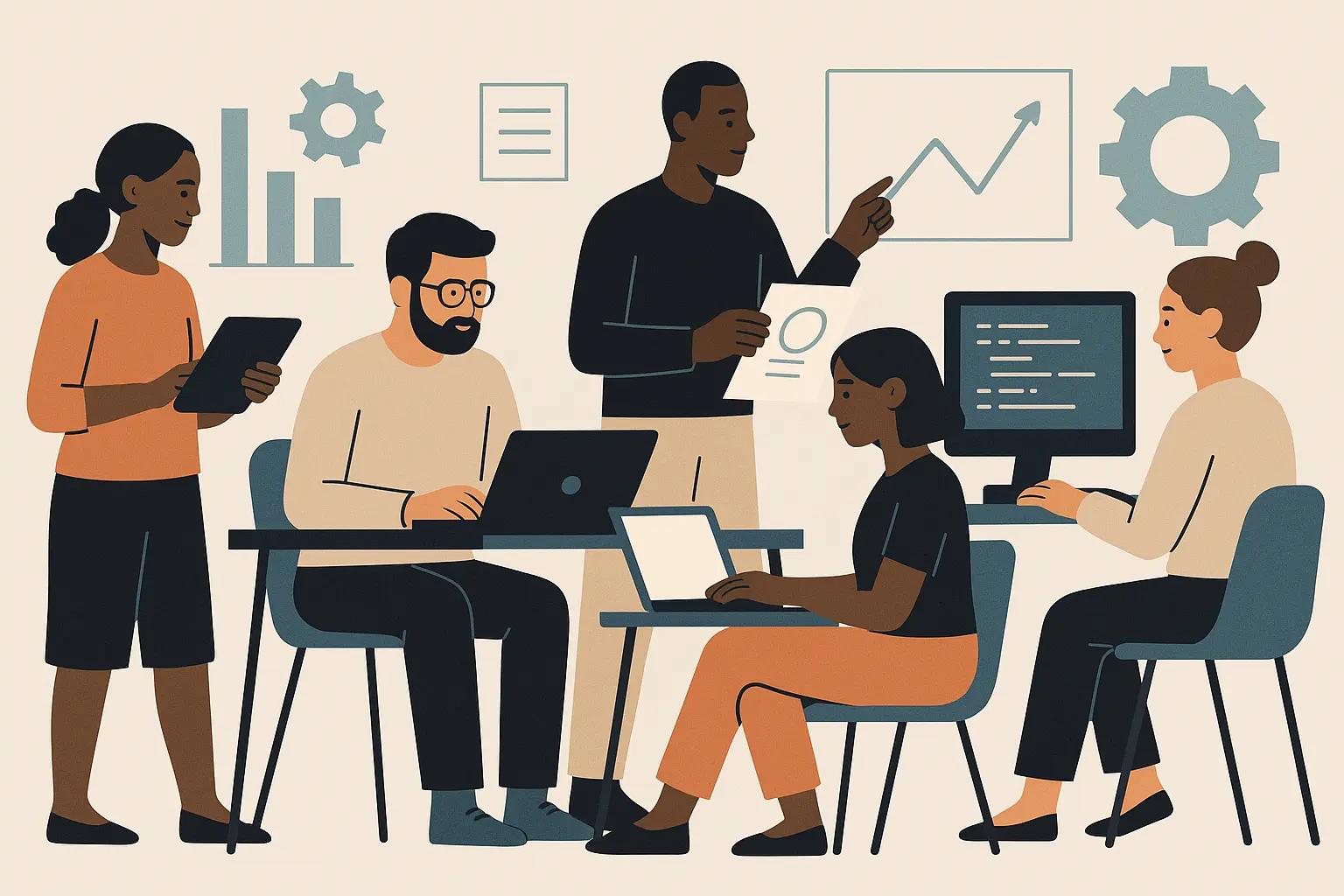
I know a small software company that started hiring bootcamp graduates instead of computer science majors. They found that the bootcamp people were often more motivated and had more practical experience. Plus, they could hire three bootcamp graduates for the cost of one CS major.
Just as businesses are discovering the power of skills over credentials, content creators are learning that effective storytelling requires understanding story theme examples that resonate with audiences regardless of traditional qualifications.
The downside? You have to be really good at assessing actual skills instead of relying on credentials as a shortcut. That takes more work upfront, but the payoff in finding great people can be huge.
12. The Return-to-Office Standoff
Apple tried to force people back to the office and some of their best employees quit. Shopify went fully remote and saw job applications increase 150%. This pretty much sums up where we are with return-to-office policies.
The truth is, different work requires different environments. Creative teams often do better in person. Software developers might be more productive at home. Customer service can work either way. The companies that are figuring this out are the ones asking “what does this specific work require?” instead of making blanket policies.
I’ve seen companies waste millions on office space that sits empty because they insisted on in-person work that could be done remotely. I’ve also seen teams struggle with collaboration because they went fully remote when their work really benefited from face-to-face interaction.
The smart approach seems to be flexibility based on actual work requirements, not ideology about what work “should” look like. The standoff is reshaping commercial real estate markets as companies reduce office space or redesign facilities for hybrid work.
13. The AI-Human Collaboration Model
JPMorgan’s AI reviews legal documents 360,000 times faster than humans. But instead of firing lawyers, they reassigned them to more strategic work. The lawyers are happier because they’re not doing boring document review all day. The bank gets deals faster. Everyone wins.
This is what good AI implementation looks like. The AI handles the repetitive stuff that nobody enjoys anyway, and humans focus on the work that requires judgment, creativity, and relationship skills.
A small accounting firm I know implemented AI for tax preparation. Instead of laying people off, they moved their junior staff into advisory services. Their revenue per employee went up 45% because they could offer higher-value services. Their employees were happier because they were doing more interesting work. The firm’s revenue per employee increased by 45%, client satisfaction scores improved by 30%, and employee retention increased because staff found their work more engaging and strategic.
The key insight: AI works best when it makes humans more capable, not when it replaces them entirely.
Supply Chain & Logistics: Rebuilding Global Commerce
Supply chain and logistics stories reflect fundamental shifts in global trade patterns driven by geopolitical tensions, technological advances, and sustainability concerns. These four stories demonstrate how companies are rebuilding supply networks to prioritize resilience over pure cost efficiency, while leveraging new technologies and transparency requirements to create more responsive and responsible supply chains.
14. The Nearshoring Revolution
Apple’s $430 billion commitment to U.S. manufacturing isn’t just a PR move – it’s a recognition that the era of “cheapest possible labor” is over. When your supply chain can be shut down by a single country’s policy decisions, cheap labor isn’t actually cheap anymore.
This isn’t just Apple – companies across industries are relocating production closer to end markets. Pandemic disruptions exposed the fragility of extended supply chains, while geopolitical tensions created additional risks for companies dependent on single-country manufacturing.
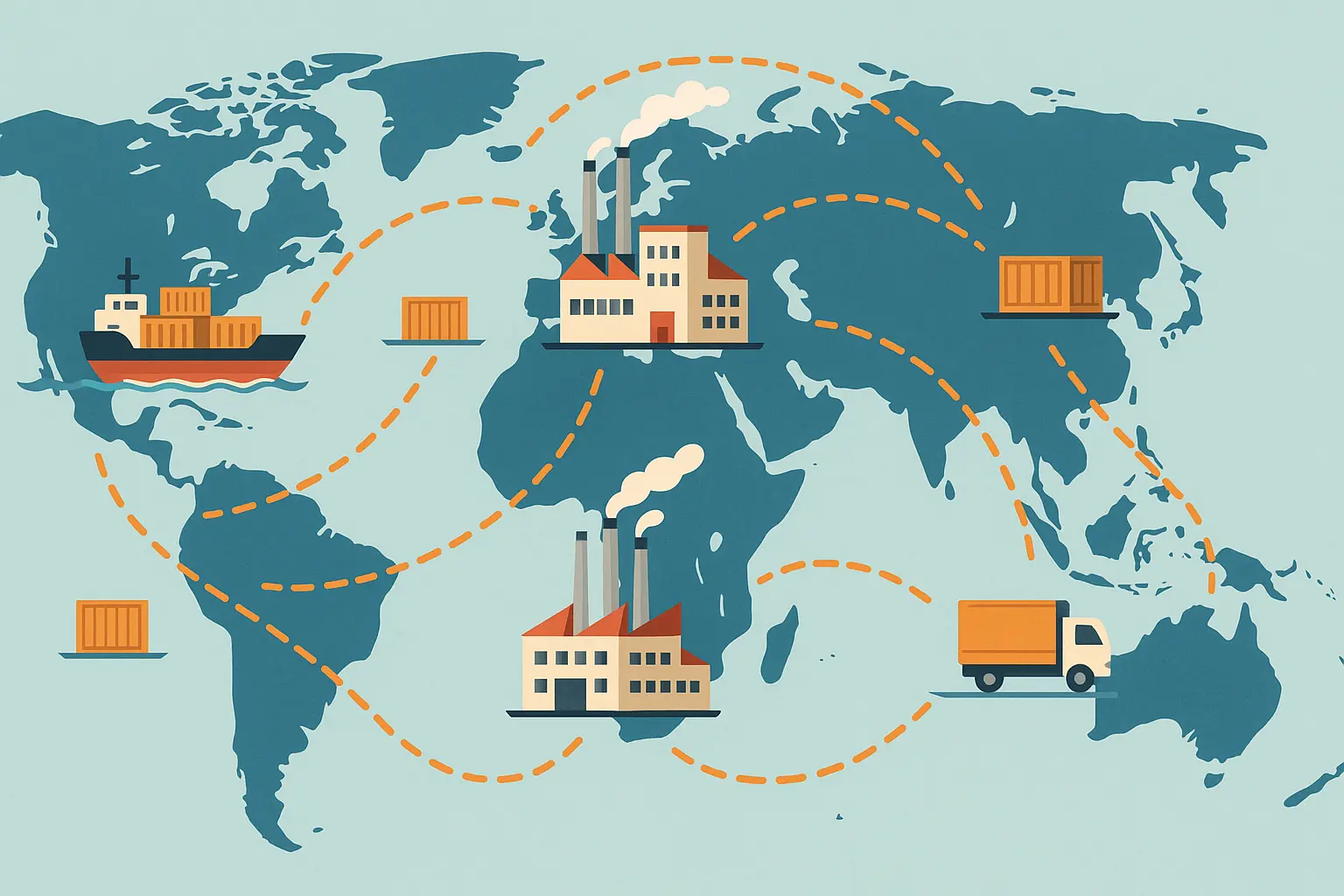
Yes, labor costs are higher when you manufacture closer to home. But when you factor in reduced shipping costs, faster response times, and less risk of disruption, the math often works out. Plus, you’re not holding as much inventory because you can get products faster when you need them.
I know a furniture company that moved production from China to Mexico. Their labor costs went up 30%, but their shipping costs dropped 50% and they cut their inventory needs in half. Overall, they’re spending less money and sleeping better at night.
New manufacturing hubs are emerging in Mexico for North American markets, Eastern Europe for European companies, and Southeast Asia for enterprises seeking alternatives to China.
15. The Autonomous Logistics Network
Amazon’s robot warehouses are impressive, but here’s what’s really interesting: they’re not trying to eliminate humans entirely. The robots handle the heavy lifting and repetitive tasks, while humans deal with exceptions and quality control. These facilities process orders 75% faster than traditional warehouses.
FedEx’s self-driving delivery trials are showing similar results – 35% cost reduction, but they still need humans for complex deliveries and customer interaction.
The pattern here is familiar: automation works best when it handles the predictable stuff and leaves humans to deal with the unpredictable stuff. The technology stack includes self-driving trucks for long-haul transportation, automated warehouses for order fulfillment, and delivery drones for final-mile service in appropriate areas.
16. The Circular Supply Chain
Dell figured out how to turn old computers into new computers. They recover plastic from used equipment and use it in new products. It sounds simple, but it required completely redesigning both their products and their supply chain processes.
The payoff? They’re saving 15% on material costs while keeping 50,000 pounds of plastic out of landfills every year. Their customers like supporting a company that’s doing something about waste, and Dell’s accountants like the cost savings.
Other companies are finding similar opportunities, but the key is designing for circularity from the beginning. Trying to retrofit circular approaches onto existing linear supply chains is usually more trouble than it’s worth.
17. The Supply Chain Transparency Mandate
Nike published a complete list of all their contract factories. Ten years ago, that would have been considered corporate suicide – giving competitors access to your supplier network. Now it’s becoming a competitive advantage because customers want to know where their products come from.
Consumer activism and regulatory pressure are driving this transparency trend. Customers want to know where products come from and how they’re made, while governments are requiring detailed supply chain reporting for human rights and environmental compliance.
|
Transparency Level |
Implementation Cost |
Timeline |
Primary Benefits |
|---|---|---|---|
|
Basic Compliance |
$1-5 million |
6-12 months |
Regulatory compliance, risk reduction |
|
Supplier Mapping |
$5-15 million |
12-18 months |
Enhanced oversight, quality control |
|
Full Transparency |
$15-50 million |
18-36 months |
Brand differentiation, consumer trust |
|
Real-time Tracking |
$25-75 million |
24-48 months |
Competitive advantage, operational excellence |
The implementation isn’t cheap – companies typically spend $10-50 million on comprehensive supply chain visibility systems. But the benefits go beyond just avoiding bad PR. Transparent supply chains reduce regulatory risk, improve brand reputation, and often lead to stronger supplier relationships.
Financial Innovation: Money Gets a Digital Makeover
Financial innovation stories showcase how digital technologies are transforming money, payments, and financial services in ways that affect every enterprise and consumer. These four stories demonstrate the convergence of traditional finance with digital innovation, creating new opportunities for efficiency and inclusion while raising important questions about privacy, regulation, and financial stability.
18. The Central Bank Digital Currency Pilot Programs
China’s digital yuan has processed $14 billion in transactions. That’s not a pilot program anymore – that’s a functioning digital currency. The program demonstrates faster transaction processing, reduced banking costs, and more direct monetary policy transmission compared to traditional payment systems.
The European Central Bank is taking a different approach, focusing more on privacy and merchant adoption. Their digital euro trials test how digital currencies can maintain user privacy while providing the transparency needed for regulatory compliance.
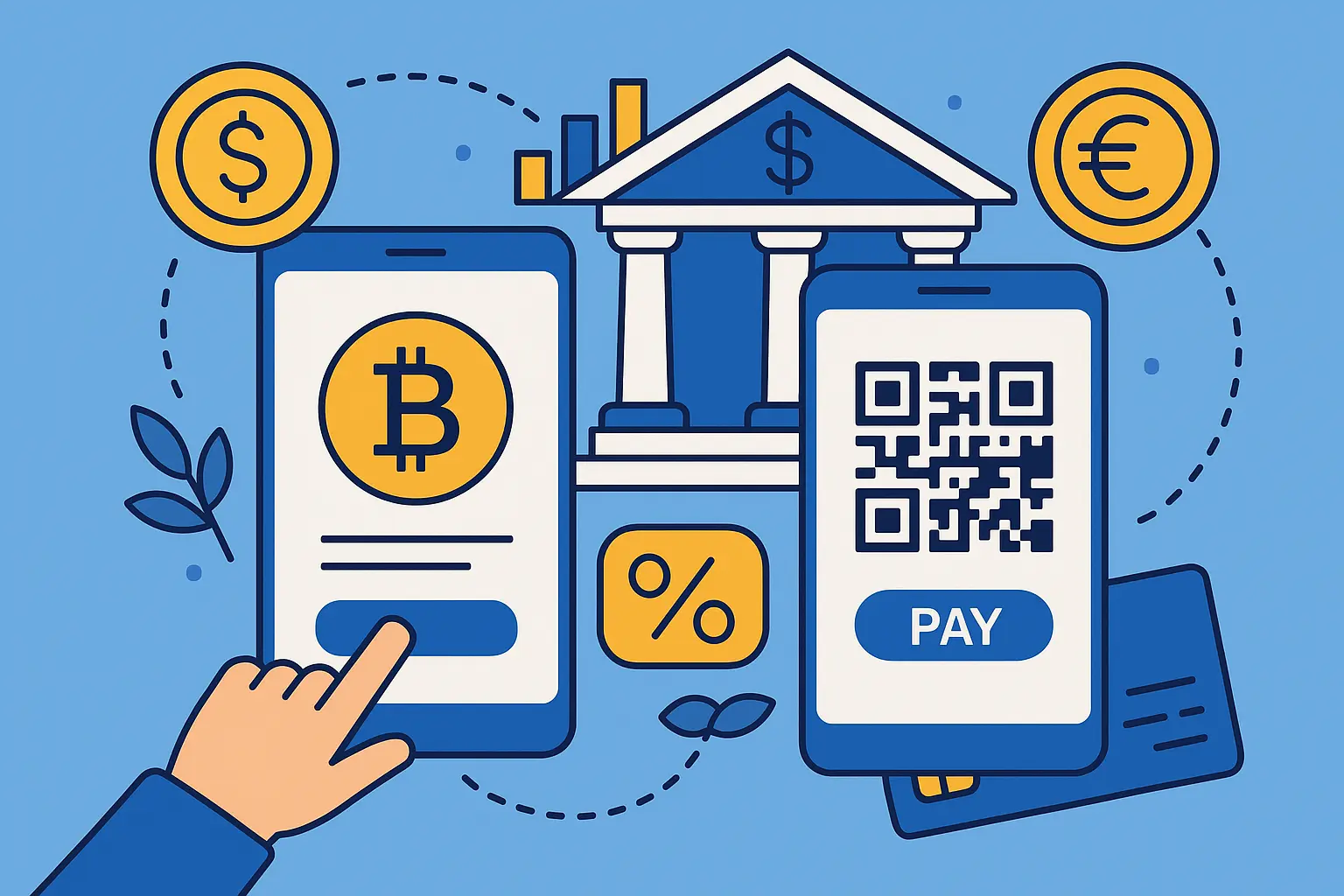
This is probably the biggest change in money since we stopped using gold. Digital currencies could eliminate the need for banks in payment processing while giving governments unprecedented visibility into economic activity.
The benefits are clear: instant transactions, cheaper cross-border payments, more direct monetary policy. The privacy concerns are also clear: governments could potentially track every financial transaction. This tension between efficiency and privacy is going to define how digital currencies develop.
19. The Buy Now, Pay Later Consolidation
Apple’s entry into Buy Now, Pay Later changed everything overnight. Suddenly, companies like Affirm and Klarna are competing with a company that has billions of existing customers and deep integration into the payment ecosystem.
The early BNPL companies had an advantage because they weren’t regulated like traditional lenders. That advantage is disappearing as regulators catch up. The companies that survive will be those that can compete on service and innovation, not just regulatory arbitrage.
Everyone’s dealing with subscription fatigue. I counted mine last month – 14 different services charging my credit card. The BNPL industry is maturing rapidly as regulatory scrutiny increases and traditional banks enter the market, forcing established players to differentiate through specialized services and international expansion.
20. The Embedded Finance Revolution
Shopify has provided over $3 billion in funding to small businesses by using their transaction data to assess creditworthiness. Instead of businesses having to apply for loans at banks, they can get financing right where they’re already managing their operations.
Uber’s instant pay feature processes $2 billion in driver payments annually. Drivers get their money immediately instead of waiting for weekly payments, and Uber earns fees from the processing.
This is what embedded finance looks like: financial services integrated into existing workflows instead of requiring separate applications or processes. The approach creates competitive advantages for platform companies while generating new revenue streams.
21. The DeFi Integration into Traditional Finance
JPMorgan’s JPM Coin has facilitated over $300 billion in transactions. That’s a traditional bank successfully using blockchain technology to make institutional payments faster and cheaper while maintaining the regulatory compliance and risk management that institutional clients require.
DeFi is finally moving beyond cryptocurrency speculation to solve real problems in cross-border payments, trade finance, and institutional lending. The key is combining DeFi’s efficiency with traditional banking’s regulatory compliance.
DeFi protocols are partnering with credit unions and regional banks to offer decentralized lending services, representing a maturation of decentralized finance from experimental technology to practical tool.
Market Disruption & New Business Models: When Industries Collide
Market disruption stories reveal how new models are challenging established industries and creating entirely new economic categories. These four stories demonstrate that successful disruption often comes from individuals or companies that reimagine value creation and customer relationships rather than simply improving existing products or services.
22. The Creator Economy Institutionalization
MrBeast makes over $100 million a year and employs 200 people. He’s not just a YouTuber anymore – he’s running a media empire that includes restaurants, consumer products, and licensing deals. His empire generates revenue through YouTube ad revenue, merchandise sales, restaurant chains, and licensing deals.
This represents a fundamental shift in how media works. Instead of building audiences to sell advertising, creators build audiences to launch multiple businesses. The audience becomes the foundation for everything else.
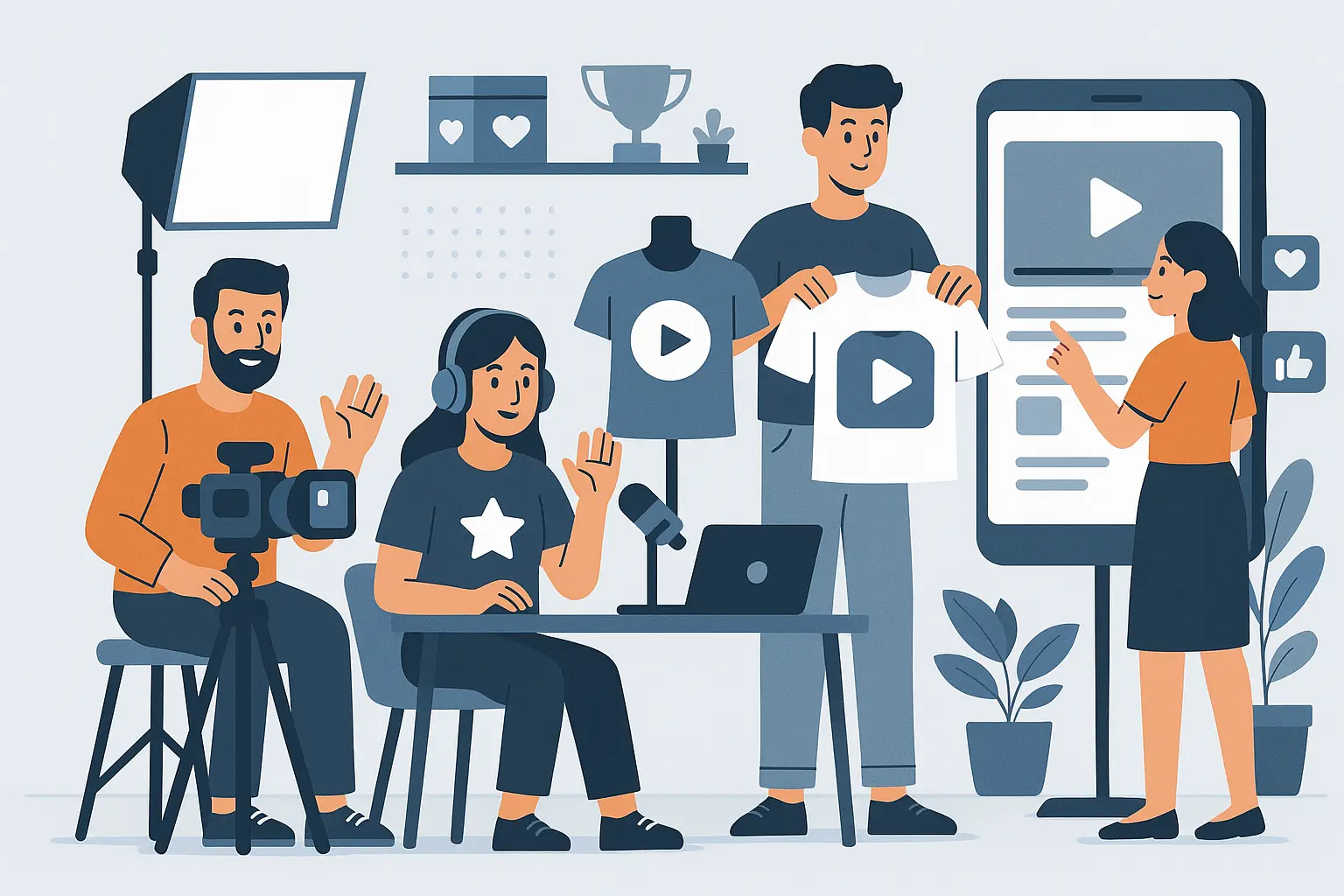
Similar patterns appear across the creator economy. Ryan Kaji parlayed toy review videos into a licensing empire worth tens of millions. Emma Chamberlain built a coffee company and media brand from her lifestyle content. These creators understand that audiences are assets that can support multiple ventures.
The success of creator enterprises demonstrates the importance of understanding your audience through compelling narratives, which is why examining story examples can help leaders craft more engaging content strategies.
Institutional investment is following creator success. Venture capital firms are investing directly in creator businesses, recognizing that large, engaged audiences are valuable assets that can support multiple revenue streams.
23. The Subscription Economy Saturation
Adobe moved away from pure subscription pricing because customers were getting tired of paying monthly fees for software they didn’t use regularly. Their shift to usage-based pricing increased customer satisfaction by 30% while maintaining revenue growth through customers who use services more intensively.
Subscription fatigue is real – consumers and enterprises are overwhelmed by recurring charges for services they may not use regularly. The average household now pays for over 12 subscription services, while organizations often struggle to track and optimize their subscription spending.
Companies are responding with more flexible pricing models. Usage-based pricing charges customers based on actual consumption rather than flat monthly fees. Hybrid models combine base subscriptions with usage charges. The key insight is that subscription models work best when they align pricing with customer value and usage patterns.
24. The Direct-to-Consumer Brand Consolidation
Unilever bought Dollar Shave Club for $1 billion, validating the DTC model. But integration has been challenging because DTC brands’ direct customer focus often conflicts with traditional companies’ retail-focused approaches. Dollar Shave Club’s growth slowed after acquisition as Unilever’s traditional retail focus conflicted with DTC’s direct customer approach.
Customer acquisition costs are rising as digital advertising becomes more competitive and less effective. DTC brands are adapting by expanding into retail partnerships and focusing more on customer retention than rapid acquisition. Some DTC brands are responding by expanding into retail partnerships, essentially becoming hybrid direct-and-retail operations.
The DTC model isn’t disappearing, but it’s evolving. Successful DTC brands are those that can maintain direct customer relationships while leveraging multiple channels for growth and distribution.
25. The Platform Economy Regulation Response
Apple reduced App Store commissions for small developers while maintaining higher rates for large developers. In response to the Epic Games lawsuit and EU Digital Markets Act, Apple reduced commission rates for small developers from 30% to 15% while maintaining higher rates for large developers.
Google proactively developed privacy-friendly advertising technologies instead of waiting for regulations to force changes. Google’s Privacy Sandbox initiative represents a more proactive approach to regulatory adaptation, developing new advertising technologies that provide targeting capabilities without third-party cookies.
The most successful platform companies are adapting proactively to regulatory pressure rather than fighting all changes. They’re maintaining their core value propositions while adjusting specific practices that attract regulatory attention. Platform regulation is reshaping the digital economy, but companies that adapt thoughtfully can maintain profitability while addressing legitimate regulatory concerns.
How These Stories Connect to Your Content Strategy
These stories share something important: they’re all about real people dealing with real challenges and finding solutions that actually work. When you’re communicating complex developments in your organization, focus on those human elements.
The challenge isn’t just identifying important developments – it’s communicating them effectively. Whether you’re explaining AI adoption to skeptical employees, describing supply chain changes to concerned investors, or presenting sustainability initiatives to demanding customers, you need to transform complex information into compelling narratives.
Traditional communication often fails because it focuses on data without context, features without benefits, or changes without human impact. The most engaging stories combine factual accuracy with emotional resonance, technical details with practical implications, and industry trends with personal relevance.

Consider how you might communicate these stories within your organization. The four-day work week story resonates because everyone can relate to work-life balance challenges. The AI collaboration story works because it addresses real fears about job displacement while showing positive outcomes. The nearshoring story connects because it affects costs, quality, and risk in ways that stakeholders can understand.
Effective storytelling requires understanding the fundamental elements that make narratives compelling, which is why mastering short story examples can provide insights into structure and engagement that apply to business communication.
Instead of leading with statistics, start with stories. Instead of explaining features, talk about benefits. Instead of describing changes, show how those changes affect real people and real outcomes.
When you’re communicating complex developments, focus on the human elements that make abstract concepts concrete. Show how changes affect real people, real companies, and real outcomes. Use specific examples and measurable results to support broader trends and implications.
The enterprises that thrive in rapidly changing environments are those that can not only identify important developments but also communicate them in ways that inspire understanding and action. This capability becomes increasingly valuable as information overload makes it harder to capture and maintain stakeholder attention.
Final Thoughts
These 25 stories aren’t just current events – they’re previews of how we’ll work, compete, and create value in the future. From AI transforming daily operations to creators building media empires, from quantum computers solving real problems to central banks digitizing money, these developments are reshaping the fundamental assumptions that guide business strategy.
The most successful organizations won’t just react to these changes – they’ll anticipate them and find ways to benefit from them. That requires not only understanding what’s happening but also communicating these developments effectively to stakeholders who need to make informed decisions about the future.
Whether you’re explaining AI adoption to your team, communicating sustainability initiatives to customers, or seeking investment for innovative approaches, your success depends on your ability to tell compelling stories about complex developments.
The future belongs to organizations that can identify important stories and tell them in ways that create lasting impact. In a world of shortened attention spans and information overload, this storytelling capability might be the most important competitive advantage you can develop.



Add comment